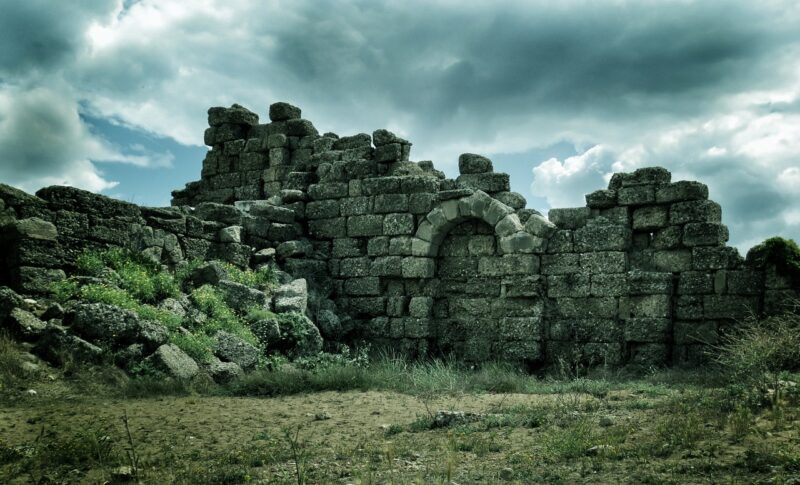The World’s Most Intriguing Ruins and Archaeological Sites That Take You Back in Time
November 13, 2024

Throughout history, human civilizations have risen, flourished, and ultimately crumbled, leaving behind magnificent ruins and archaeological sites that tell tales of their existence. These remnants of the past not only transcend time but also provide a glimpse into our ancestors’ lives, cultures, and the environments they inhabited. In this article, we will delve into some of the world’s most fascinating ruins and archaeological sites, exploring their historical significance and the mysteries that surround them.
1. Machu Picchu, Peru
Machu Picchu, often dubbed the “Lost City of the Incas,” stands proudly atop the Andes Mountains and is one of the most iconic archaeological sites in the world. Rediscovered in 1911 by explorer Hiram Bingham, this 15th-century Incan citadel was built under the reign of Emperor Pachacuti.
#
Why It’s Intriguing:
Machu Picchu is lauded for its sophisticated dry-stone construction, which has withstood centuries of earthquakes. The site features various temples, agricultural terraces, and even a sophisticated water-management system.
#
Mysteries and Significance:
Despite its fame, many mysteries remain. Why was it built? Who lived there? Scholars theorize it might have been a royal retreat or a sacred religious site. The breathtaking landscape and the site’s enigmatic history make it a top destination for travelers and history buffs alike.
2. Petra, Jordan
Petra, often referred to as the “Rose City” due to the color of the stone from which it is carved, is a UNESCO World Heritage Site and one of the New Seven Wonders of the World. Established as early as the 5th century B.C. by the Nabataeans, Petra thrived as a major trading hub.
#
Why It’s Intriguing:
The remarkable rock-cut architecture, stunning tombs, and sophisticated water conduit systems showcase advanced engineering skills of the Nabataeans. The most notable structure is Al-Khazneh (The Treasury), which is intricately carved into the sandstone cliffs.
#
Mysteries and Significance:
Much remains unknown about the exact reasons behind Petra’s decline in the 7th century. Additionally, the extensive network of tombs and temples has sparked interest and speculation about the cultural practices of its inhabitants.
3. The Pyramids of Giza, Egypt
The Pyramids of Giza, particularly the Great Pyramid of Khufu, are among the most recognizable structures in the world. Built as monumental tombs around 4,500 years ago, these pyramids are a testament to ancient Egypt’s architectural ingenuity.
#
Why It’s Intriguing:
Constructed using millions of limestone blocks, the Great Pyramid was the tallest man-made structure for over 3,800 years. The precision in their construction and the alignment with celestial bodies continue to astound archaeologists and astronomers alike.
#
Mysteries and Significance:
While much is known about the purpose of the pyramids, many questions remain, such as how the ancient Egyptians managed to construct them with such precision and what treasures lie hidden within. The Pyramids of Giza continue to be a source of fascination and research.
4. Stonehenge, England
Stonehenge is a prehistoric monument located in Wiltshire, England, known for its massive stone circle. Dating back to approximately 3000 BC, it poses many questions regarding its purpose and significance to ancient populations.
#
Why It’s Intriguing:
The sheer size of the stones and the precision of their placement suggest a highly advanced understanding of engineering and astronomy. It is believed that Stonehenge may have functioned as a ceremonial site or an astronomical observatory.
#
Mysteries and Significance:
The exact purpose of Stonehenge remains under debate, with theories ranging from a burial ground to a site for astronomical alignments. The mystery of its origin and use adds to its allure, making it a popular subject for archaeologists and tourists alike.
5. Angkor Wat, Cambodia
Angkor Wat, the largest religious monument in the world, was originally constructed in the early 12th century as a Hindu temple dedicated to the god Vishnu. It later transitioned to a Buddhist temple, reflecting the historical shifts within the region.
#
Why It’s Intriguing:
Famous for its grandeur and intricate bas-reliefs, Angkor Wat showcases the zenith of Khmer architecture. Its design reflects the universe in stone and vast cosmic principles, making it an architectural masterpiece.
#
Mysteries and Significance:
The reasons behind the decline of the Khmer Empire and the abandonment of Angkor Wat remain a subject of study. The site’s restoration continues, providing insights into the architectural prowess and cultural narratives of the Khmer civilization.
6. Easter Island, Chile
Easter Island, or Rapa Nui, is famous for its moai statuary, large stone figures that dot the landscape. Created by the Rapa Nui people between 1400 and 1650 CE, these remarkable sculptures are a part of the island’s unique cultural heritage.
#
Why It’s Intriguing:
The construction and transportation of the moai, some weighing over 80 tons, highlight an advanced level of engineering and social organization in a relatively isolated environment.
#
Mysteries and Significance:
The decline of the Rapa Nui civilization is often attributed to environmental factors and social upheaval. This connection with the land and its resources raises questions about sustainability and human impacts on ecosystems.
7. Chichen Itza, Mexico
Chichen Itza is one of the most important archaeological sites of the Maya civilization. Known for its iconic pyramid, El Castillo (The Castle), the site flourished between 600 and 1200 CE, served as a major political and economic center.
#
Why It’s Intriguing:
The site features a mix of architectural styles, illustrating the cultural diversity of the Mayan civilization. The structure’s design acts as a sophisticated calendar, casting shadows that mark the equinox.
#
Mysteries and Significance:
Despite its popularity, many aspects of Mayan culture and the reasons for the decline of Chichen Itza remain enigmatic, prompting continued research and exploration.
Conclusion
Visiting these ruins and archaeological sites provides a profound experience, allowing us to connect with humanity’s past and understand the complexities of historical civilizations. As we explore the remnants of these ancient cultures, we gain insights not just into where we came from, but also into the resilience and ingenuity of human beings. Preserving these sites is essential for future generations, ensuring that we continue to learn from our shared history.
As you plan your next adventure, consider these breathtaking destinations that promise not only stunning landscapes but also captivating stories from the past.







